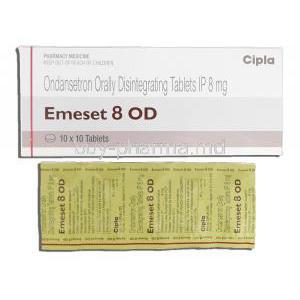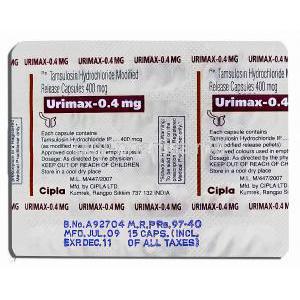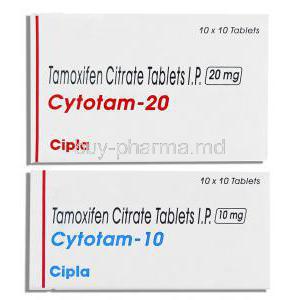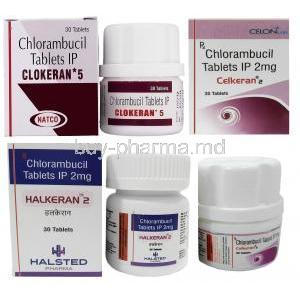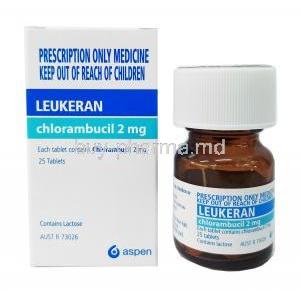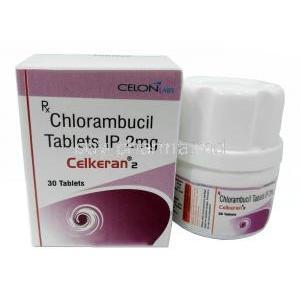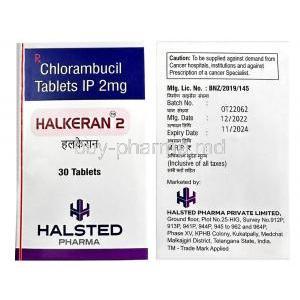Introduction to Votrient (Pazopanib)
Overview of Votrient as a Tyrosine Kinase Inhibitor
Votrient, known by its generic name Pazopanib, is a potent tyrosine kinase inhibitor. It selectively blocks multiple receptor pathways that drive cancer cell growth and angiogenesis. By disrupting these signaling cascades, Votrient helps slow down the proliferation of malignant cells and reduces the supply of nutrients to tumors.
Historical Background and FDA/EMA Approvals
Pazopanib received approval from the U.S. Food and Drug Administration (FDA) in 2009 for the treatment of advanced renal cell carcinoma. Shortly after, the European Medicines Agency (EMA) also endorsed its use. Since then, it has been integrated into treatment regimens across oncology practices worldwide.
Therapeutic Class and Place in Cancer Treatment
As a member of the angiogenesis inhibitors, Votrient plays a crucial role in managing advanced solid tumors. It is often prescribed when traditional chemotherapy provides limited benefit. Its targeted approach enhances specificity, reducing systemic toxicity compared to non-selective cytotoxic drugs.
Votrient success rate
Votrient (pazopanib) success rates vary significantly by cancer type, with overall response rates ranging from approximately 27% to 34.5% in studies for advanced soft tissue sarcoma (STS) and renal cell carcinoma (RCC), and a Disease Control Rate (DCR) around 75% in some metastatic RCC studies. Progression-free survival (PFS) and overall survival (OS) also vary, with one study reporting median PFS of 3 months and median OS of 9.9 months for advanced STS.
Composition and Formulation
Active Ingredient: Pazopanib Hydrochloride
The pharmacologically active compound in Votrient is pazopanib hydrochloride. It acts by targeting vascular endothelial growth factor receptors (VEGFR) and related tyrosine kinases.
Available Strengths and Dosage Forms
Votrient is supplied as oral tablets in varying strengths, commonly 200 mg and 400 mg. These options allow flexibility in titrating doses according to patient-specific needs and tolerability.
Inactive Ingredients and Excipients
The formulation also contains inactive excipients such as magnesium stearate, microcrystalline cellulose, and hypromellose. These components assist in maintaining tablet integrity, stability, and absorption characteristics.
Pazopanib vs cabozantinib
Cabozantinib has shown favorable results compared to pazopanib, particularly in metastatic renal cell carcinoma (mRCC) (kidney cancer), with one study finding better progression-free survival (PFS) for intermediate- and poor-risk patients. However, cabozantinib has potential for more severe side effects like hypertension and diarrhea, whereas pazopanib might have a better safety profile and potentially be considered for patients who cannot tolerate other treatments.
Pazopanib Mechanism of Action
Inhibition of VEGF Receptors and Angiogenesis Suppression
Pazopanib exerts its effects by binding to and inhibiting VEGF receptors 1, 2, and 3. This inhibition disrupts angiogenesis—the formation of new blood vessels essential for tumor nourishment and expansion.
Impact on Tumor Growth and Metastasis Prevention
By starving tumors of oxygen and nutrients, Votrient hinders both primary growth and metastatic spread. The blockade of platelet-derived and fibroblast growth factor receptors further augments its antineoplastic activity.
Pharmacodynamics and Pharmacokinetics Overview
Pazopanib demonstrates dose-dependent bioavailability, with a half-life of approximately 30 hours. Its metabolism is predominantly hepatic via CYP3A4, underscoring the importance of monitoring liver function throughout therapy.
Approved Uses of Votrient
Advanced Renal Cell Carcinoma (RCC)
Votrient is indicated for the treatment of adults with advanced RCC, offering an effective alternative for patients unsuitable for cytokine-based regimens.
Advanced Soft Tissue Sarcoma (STS)
It is approved for individuals with advanced soft tissue sarcoma who have previously received chemotherapy, demonstrating efficacy in extending progression-free survival.
Other Cancers with Regulatory Approval in Select Regions
In certain jurisdictions, Votrient is sanctioned for additional tumor types, reflecting ongoing clinical validation and regional therapeutic strategies.
Off-Label Uses of Votrient
Ovarian Cancer Management
Clinical studies suggest pazopanib may improve outcomes in recurrent or resistant ovarian carcinoma by inhibiting angiogenic pathways.
Thyroid Cancer Treatment
For aggressive or refractory thyroid malignancies, pazopanib has shown promising results in prolonging disease stabilization.
Investigational Use in Glioblastoma and Other Solid Tumors
Research is ongoing to assess pazopanib in glioblastoma multiforme and other refractory solid tumors, where standard therapy yields limited benefit.
Role in Combination Therapy with Other Targeted Agents
Pazopanib is being studied in combination with immunotherapies and cytotoxic agents to enhance synergistic antitumor activity while managing resistance mechanisms.
Dosage and Administration Guidelines
Pazopanib Dosage for Renal Cell Carcinoma
The usual recommended dose is 800 mg taken orally once daily, administered consistently either on an empty stomach or at least one hour before meals.
Pazopanib Dosage for Soft Tissue Sarcoma
For soft tissue sarcoma, the standard dosage mirrors RCC regimens, adjusted only if toxicity necessitates modification.
Adjustments in Hepatic or Renal Impairment
Patients with hepatic impairment require lower doses due to altered metabolism. Renal impairment typically does not demand significant dose changes, but monitoring remains crucial.
Instructions for Missed Doses and Dose Modifications
If a dose is missed, it should not be doubled. Instead, patients are advised to resume the next scheduled dose. Dose reductions may be required in cases of hypertension, hepatotoxicity, or gastrointestinal intolerance.
Food Interactions and Timing Considerations
High-fat meals increase pazopanib exposure, potentially elevating toxicity. Thus, consistent administration under fasting conditions is essential for predictable absorption.
Administration in Special Populations
Elderly Patients: Altered Pharmacokinetics and Monitoring Needs
In elderly populations, decreased organ reserve and polypharmacy increase risks of adverse outcomes. Careful monitoring of cardiovascular and hepatic parameters is mandatory.
Pregnant Women: Teratogenicity Risks and Contraindications
Animal studies reveal teratogenic effects. Votrient is contraindicated during pregnancy due to high risk of fetal harm.
Nursing Mothers: Excretion into Breast Milk and Infant Risk
Pazopanib may pass into breast milk, posing risks to infants. Breastfeeding is not recommended during and after treatment.
Pediatric Patients: Safety and Efficacy Data in Children
Limited data exist on pediatric use. Clinical studies are ongoing, but safety and efficacy remain unestablished in younger populations.
Votrient Side Effects
- Gastrointestinal disturbances such as nausea, vomiting, and diarrhea
- Hypertension and cardiovascular stress
- Loss of appetite and persistent fatigue
- Changes in hair color and dermatological alterations
Long term Side Effects of Votrient
- Severe hepatotoxicity and elevated liver enzymes
- QT interval prolongation and arrhythmias
- Hemorrhagic events and thromboembolic complications
- Pulmonary dysfunction and renal impairment
Pazopanib Drug Interactions
- CYP3A4 inducers and inhibitors such as ketoconazole and rifampin significantly alter plasma concentrations
- Proton pump inhibitors and antacids reduce absorption and efficacy
- Concurrent anticoagulant use increases bleeding risk
- Dietary interactions including grapefruit juice enhance systemic toxicity
Warnings and Precautions
- Routine monitoring of liver function and blood pressure is required
- Cardiac surveillance with periodic ECG to detect arrhythmias
- Importance of consistent adherence; abrupt cessation may precipitate rapid tumor progression
- Potential for delayed wound healing; discontinue prior to elective surgery
Contraindications
Known Hypersensitivity to Pazopanib or Excipients
Votrient is contraindicated in individuals with a known history of hypersensitivity reactions to pazopanib or any of its excipients. Reactions may include rash, severe pruritus, angioedema, or anaphylaxis. Patients presenting with prior allergic responses to related tyrosine kinase inhibitors should also be carefully evaluated before therapy.
Severe Hepatic Impairment
Because pazopanib undergoes extensive hepatic metabolism, individuals with severe hepatic impairment are at increased risk of life-threatening toxicity. Elevated liver enzymes and impaired clearance render its use unsafe in this patient population.
Pregnancy and Breastfeeding
Pazopanib is strictly contraindicated during pregnancy due to its teratogenic potential. It can cause fetal harm, structural abnormalities, and embryonic lethality in animal studies. Likewise, breastfeeding should be avoided, as excretion into breast milk may lead to severe toxicity in nursing infants.
Careful Administration Guidelines
Patients with Pre-Existing Cardiovascular Disease
In individuals with hypertension, ischemic heart disease, arrhythmias, or congestive heart failure, administration of Votrient demands close cardiovascular monitoring. The drug may exacerbate hypertension and prolong the QT interval, precipitating arrhythmic events.
Patients with Renal Impairment or Proteinuria
Although renal clearance is not the primary elimination route, pazopanib may worsen renal function and induce proteinuria. Regular urinalysis and renal function tests are advised for patients with pre-existing renal compromise.
Patients Undergoing Surgical Procedures
Because pazopanib impairs wound healing, it should be discontinued prior to elective surgical interventions. Resumption should occur only after sufficient wound recovery has been confirmed by a healthcare professional.
Patients with Gastrointestinal Perforation Risk
Pazopanib may increase the risk of gastrointestinal perforation, particularly in individuals with prior abdominal surgeries, diverticulitis, or inflammatory bowel disease. Early recognition of abdominal pain or bleeding is critical to prevent catastrophic outcomes.
Important Precautions
Regular Monitoring of Hepatic Enzymes and Renal Function
Liver function tests, including ALT, AST, and bilirubin levels, should be performed before initiating therapy and monitored regularly thereafter. Renal function markers such as serum creatinine and eGFR also require periodic evaluation to prevent cumulative toxicity.
Periodic ECG to Detect QT Prolongation
Electrocardiographic monitoring is necessary in patients at risk of arrhythmia. Prolongation of the QT interval can predispose to torsades de pointes and sudden cardiac arrest if left undetected.
Guidance on Contraception During and After Treatment
Effective contraception is mandatory for both male and female patients during therapy and for a defined period after discontinuation. This precaution is essential to prevent drug-induced embryotoxicity and teratogenesis.
Avoidance of High-Fat Meals to Reduce Altered Absorption
Administration with high-fat meals significantly increases systemic exposure, thereby elevating the risk of adverse effects. Consistent dosing on an empty stomach ensures predictable absorption and stable therapeutic outcomes.
Overdosage and Emergency Management
Symptoms of Overdose
Overdose manifestations may include:
- Severe and refractory hypertension
- Marked hepatotoxicity with jaundice and hepatic failure
- Intense diarrhea leading to dehydration and electrolyte imbalance
Supportive Treatment and Monitoring Protocols
There is no antidote for pazopanib overdose. Management is symptomatic and supportive, involving careful monitoring of vital signs, aggressive hydration, antihypertensive therapy, and close observation of hepatic and renal function.
Lack of Specific Antidote and Management Strategies
Due to the absence of a targeted antidote, clinicians must rely on general critical care principles, including hospitalization, intensive monitoring, and supportive pharmacologic interventions as required.
Storage and Handling Precautions
Recommended Storage Temperature and Container Requirements
Tablets should be stored at controlled room temperature, typically 20–25°C (68–77°F). They must remain in their original container to ensure stability and avoid contamination.
Protection from Moisture and Light
Exposure to excessive humidity or direct light can degrade pazopanib tablets. Containers should be kept tightly closed and stored in a dry, shaded location.
Safe Handling Instructions for Caregivers and Healthcare Providers
Caregivers should handle tablets with clean, dry hands. Direct contact should be minimized, especially for pregnant women, due to potential teratogenic risks. Use of gloves may be recommended in healthcare environments.
Disposal Methods for Unused or Expired Medication
Unused or expired tablets should not be discarded with household waste. Patients are advised to follow local pharmaceutical disposal programs or return the medication to a pharmacy equipped for safe elimination.
Votrient, Pazopanib FAQ
- What is Votrient used for?
- What is the life expectancy of someone with Votrient?
- What foods should you avoid while taking Votrient?
- How long can you stay on Votrient?
- How effective is Votrient for treatment?
- When is the best time to take Votrient?
- Does Votrient make you tired?
- Is Votrient a chemo drug?
- What should I avoid while taking Votrient?
- How does Votrient work in the body?
- Does Votrient cause high blood pressure?
- Can Votrient affect fertility?
- Is Votrient safe for older adults?
- Can Votrient cause blood clots?
- How long does Votrient stay in your system?
- Is Votrient a targeted therapy?
- When was Votrient approved?
- What is the success rate of pazopanib?
- What is the mechanism of action of pazopanib?
- What are the common side effects of pazopanib?
- Is pazopanib toxic to the liver?
- What are the side effects of pazopanib for eyes?
- Does pazopanib change hair color?
- How long can you take pazopanib?
- What is the life expectancy on pazopanib?
- Is pazopanib hazardous?
What is Votrient used for?
Votrient (pazopanib) is a targeted cancer therapy classified as a tyrosine kinase inhibitor (TKI). It specifically targets and inhibits certain proteins found in cancer cells known as tyrosine kinases, which include those within the VEGFR family, among others. These proteins play a crucial role in supplying blood to the tumor.
What is the life expectancy of someone with Votrient?
95%
What foods should you avoid while taking Votrient?
- Greasy food
- Spicy food
- Acidic foods
How long can you stay on Votrient?
Long term
How effective is Votrient for treatment?
95%
When is the best time to take Votrient?
At least 1 hour before or 2 hours after a meal
Does Votrient make you tired?
Yes
Is Votrient a chemo drug?
No
What should I avoid while taking Votrient?
Grapefruit or grapefruit juice
How does Votrient work in the body?
The active ingredient in Votrient, pazopanib, is a protein-kinase inhibitor. This means it obstructs certain specific enzymes known as protein kinases. These enzymes are located in various receptors on the cell surface that play a role in the growth and dissemination of cancer cells, such as 'VEGFR', 'PDGFR' and 'KIT'.
Does Votrient cause high blood pressure?
Yes
Can Votrient affect fertility?
Yes
Is Votrient safe for older adults?
You might be at a greater risk of liver damage with Votrient if you're over the age of 65.
Can Votrient cause blood clots?
Yes
How long does Votrient stay in your system?
5 to 6.5 days
Is Votrient a targeted therapy?
Yes
When was Votrient approved?
2009
What is the success rate of pazopanib?
The clinical response rate was 100% for patients undergoing pazopanib therapy as their first-line treatment, 46.2% for those receiving pazopanib as second-line treatment, and 48.6% for patients who had pazopanib as third-line treatment.
What is the mechanism of action of pazopanib?
Pazopanib is a multi-kinase inhibitor that restricts tumor growth by interfering with angiogenesis through the inhibition of enzymes such as vascular endothelial growth factor receptor (VEGFR), platelet-derived growth factor receptor (PDGFR), c-KIT, and FGFR.
What are the common side effects of pazopanib?
- diarrhea
- constipation
- heartburn
- change in taste perception
- joint or muscle discomfort
- swelling in the face
- tender, reddened palms of the hands and soles of the feet
- hair thinning
Is pazopanib toxic to the liver?
Yes
What are the side effects of pazopanib for eyes?
- ocular irritation
- dry eyes
- keratitis
- chemosis
Does pazopanib change hair color?
Yes
How long can you take pazopanib?
as long as you are gaining from the treatment and the side effects are manageable.
What is the life expectancy on pazopanib?
11.7 months
Is pazopanib hazardous?
Yes


